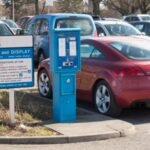The Scottish government unveiled a new rail strategy on November 21, 2025, moving away from big electrification projects to prioritize replacing old diesel trains with zero emission models. This change addresses post Covid budget strains and aims to cut emissions while keeping costs in check for taxpayers.
Roots of the Rail Decarbonisation Push
Scotland’s rail network has long aimed for a greener future. Back in 2020, officials laid out bold plans to fully decarbonise passenger services by 2035. That vision called for wiring up about 130 kilometers of track each year to power electric trains.
The push came amid growing calls to fight climate change. Rail travel already emits far less than cars or planes, but diesel engines still pollute. Leaders saw electrification as the key to net zero goals by 2045. Yet, real world hurdles like the pandemic slowed progress and hiked costs.
Recent investments show commitment. In September 2025, the government pledged 342 million pounds to electrify lines in Fife and the Borders. This sets the stage for newer trains to run smoothly on powered tracks.

Core Updates in Rail Recharged Strategy
The fresh plan, titled Rail Recharged: Scotland’s Fleet Transition Strategy, rethinks the approach. It stresses swapping out aging fleets first to slash emissions from the trains themselves. Officials say this delivers better value and tackles immediate reliability issues.
By 2045, all ScotRail diesel trains must give way to zero emission options. The strategy groups services into three types: inter city, suburban, and rural. For busy inter city and suburban routes, full electrification remains the long term goal. But rural lines face delays in greener tech.
This shift responds to economic realities. Post Covid recovery strained funds, forcing a more measured path. The plan builds on existing projects without adding new wiring timelines right away.
Key features of the strategy include:
- Procurement of new inter city and suburban fleets to replace 1980s era diesel units.
- Phased electrification to support freight and passenger needs.
- Ties to broader just transition efforts for jobs and communities.
How the Plan Affects Daily Rail Services
Passengers will notice changes across Scotland’s tracks. On high demand lines like Edinburgh to Glasgow, modern electric trains already hum along. The strategy pushes to extend this to more suburban spots, making rides faster and cleaner.
Inter city services, linking major cities, get priority for new zero emission stock. This means fewer breakdowns and better comfort for long hauls. Rural routes, including scenic West Highland paths, stick with diesel longer. Plans for hydrogen or battery power on these lines are paused for now.
To boost ridership, peak fares stay gone. This saves travelers money and encourages shifts from cars. Experts note it could cut road congestion and air pollution in cities.
Critics worry about scenic lines. Travelers on routes with stunning views might endure noisy old diesels for years. Yet, officials argue fleet renewal ensures services run without major disruptions.
Environmental Gains and Economic Boosts
Decarbonising rail fits Scotland’s net zero drive. New trains cut direct emissions, while electrification zaps even more. The plan eyes battery electric options for non wired sections, drawing power from overhead lines or stations.
This supports wider climate action. Rail’s low footprint grows as more people board, easing pressure on buses and flights. Freight benefits too, with electrified tracks handling heavier loads greener.
Economically, the strategy creates jobs. Building and maintaining new fleets sparks supply chain growth. It aligns with leisure and business travel, fueling regional economies. Recent data shows rail supports thousands of roles in Scotland.
| Service Type | Current Status | Planned Changes by 2045 | Emission Reduction Focus |
|---|---|---|---|
| Inter-City | Mix of diesel and electric | Full zero-emission fleet, phased wiring | High, via electrification and new trains |
| Suburban | Mostly electric in urban areas | Complete electrification as end goal | Medium to high, fleet renewal key |
| Rural | Diesel dominant on scenic lines | Zero-emission replacement, tech trials | Gradual, batteries or hydrogen later |
Hurdles and Voices from the Ground
Not everyone cheers the pivot. Some rail fans and green groups call for faster wiring to meet 2035 targets. Delays on rural green tech disappoint tourists seeking eco friendly scenic trips.
Budget limits spark debate. The government invests 4.2 billion pounds in rail from 2024 to 2029, but choices mean trade offs. Post Covid hits linger, with supply chains still recovering.
Public input shapes the path. Recent talks highlight needs for reliable service over flashy tech. As one traveler noted, a train that runs on time beats a broken green one any day.
Looking Ahead to a Connected Scotland
The strategy sets a 20 year roadmap for modern rails. It promises resilient services that draw riders back. With fare cuts and new trains, rail could reclaim market share from cars.
This move ties into national goals for inclusive growth and health. Cleaner air and fewer emissions help communities thrive. As Scotland pushes net zero, rail leads the charge.
Readers, what do you think of this rail shift? Share your views in the comments and spread the word on social media to join the green transport conversation.


















